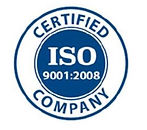實 績 案 例
百弘國際實業有限公司
POLY-STATES INDUSTRIAL INC.
國 際 認 證

.jpg)

.jpg)
ASTM (Am Society for Testing and Materials) TESTING:
B 117
15,000 Hour Salt Spray (Fog)
- Salt Spray Fog Testing
- RUST GRIPR over Steel
D-257-99
D-C Resistance of Insulating Materials
- Surface Resistivity = 5.237E+15
- Volume Resistivity = 5.263E+15
D 522
Mandrel Bend
- Method A - Conical Mandrel - 7.25% Elongation
- Method B - Cylindrical Bend - No Cracking Over ½ Inch Rod
D 610
Percentage of Surface Rusted = Rating 9
D 714
No Blistering = Rating 10 (Perfect)
D 1654
No Loss of Adhesion = Rating 10
DG 20-88
Chemical Resistance = Excellent
D 2369
Volatile Content of Coatings
- 380 g/L and 3.17 gal/lb
D 3359
Adhesion and Penetration
- Penetration through 18 layers of Lead Based Paint
- Rated 5A = Excellent
D 4060
Tabor Abrasion Resistance
- 1000 Cycles with a CS 17 Wheel, 1000 Gram Load
- 18 milligram loss per 1000 Cycles Rated Excellent
D 4541
Standard Method for Pull-0ff Strength
-Pull-Off Strength = 2248 psi
D 5894
Standard Practice for Cyclic Salt Fog/UV
Exposure of Painted Metal
- 10,000 Hours of Exposure
- No Signs of Blistering or UV Radiation Degrading
- ASTM D 610 Rating: 9-P, 10, and 10 (Perfect)
D 6904
Resistance to Wind-Driven Rain for Exterior
Coatings Applied to Masonry = No Penetration
D 7088
Resistance to Hydrostatic Pressure for
Coatings Used in Below Grade Applications
Applied to Masonry = No Penetration
E 1088-00
Spread of Flame Tests on Pitched Roofs
- Class “A” Non-combustible
E 903-96
Spectral Reflectance
- Average of 3 Tests
44.6% Solar Reflectance
55.5% Solar Absorption
E 1795
Encapsulation of Leaded Paint in Buildings
- Direct Impact Resistance (ASTM D 2794)
- Adhesion (ASTM D 3359, D 4541)
- Dry Abrasion Resistance (ASTM D 4060)
- Water Vapor Transmission (ASTM D 1653)
- Flexibility – Mandrel Bend (ASTM D 522)
- Distilled Water Resistance – Immersion 24 hours
- .010” Tinplated Steel (ASTM D 1308, D 3359)
- 1/4” Steel or Aluminum (ASTM D 1308, D 4541)
- Chemical Resistance – 24 Hours- 12 Reagents
- Spot Test on Glass (ASTM D 1308)
- Surface Burning Characteristics (E 84)
- Volatile Organic Content (VOC)
E 1795
Encapsulation of Leaded Paint in Buildings
- (ASTM D 2369, D 4017, D 3960, D 1475)
- Weathering (1000 hours)
- Aging (interior and exterior)
- Scrub Resistance (ASTM D 2486)
- Black Plastic – No Break thru after 12 cycles)
- Mildew Resistance (ASTM D 3273, 3274)
- Paint / Repair Ability (ASTM D 3359)
- Tensile Properties (6780psi after 3 weeks)
- Visco-Elastic Properties (ASTM D 2370
F 963
Compliance with Maximum Soluble Limits
- Antimony, arsenic, barium, cadmium, chromium
- Lead, mercury, and selenium
G 20
Chemical Resistance of Pipeline Coatings
- 5 % Ammonia, 5 % Urea and Diesel Fuel
- 180 Days – No Failure.
G 85
Prohesion (Louisiana DOT)
- 1500 Hour Salt Fog
- Rated 9 (out of a possible 10 rating)
TESTING FOR ABS (AMERICAN BUREAU OF SHIPPING), IMO
(INTERNATIONAL MARITIME ORGANIZATION) AND U.S.
COAST GUARD APPROVAL.
IMO A 653
Flame Spread and Heat Release
- IMO Res. A 653 (16) = Passed
MSC 41
Smoke and Toxicity
- MSC Res. 41 (64) = Passed
Rame-Hart Static Contact Angle (Young’s Equation):
Static contact angle of Rust Grip® is lower than water demonstrating that Rust Grip® has exceptional wettability, adhesiveness, and high solid surface free energy for greater penetration into the substrate.
China Center for Technical Testing:
National Measurement M0729
GB/T 1771-91
Resistance to Salt Fog (2000 hours)
GB/T 1866-88
Manuel Aging (2000 hours)
GB/T 10834-88
Resistance to Salt Water (1000 hours)
GB/T 5219-85
Adhesion (pulling apart method)
Window Recycling Test for Encapsulation of Lead Based Paint:
Testing Was Done for Encapsulating Existing Lead Based Paint on Windows for HUD
- Window coated with RUST GRIP® - Cycled 29,700 Times
- Coated surface showed no wear, friction burn, or lead-based paint exposure
Maximum Temperature Exposure Test:
Thermal Analysis Testing was Performed on RUST GRIP® to Determine Maximum Temperature Exposure During Application and Operation Maximum temperature is 600 degrees F (315 degrees C) – Based on Cyclic and Not Constant Heat
-07-15-22-C2C_page-0001.jpg)
-07-15-22-C2C_page-0002.jpg)

